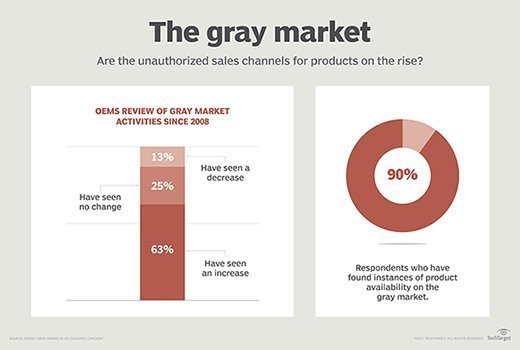OEM (original equipment manufacturer)
OEM, or original equipment manufacturer, is a broad term that describes a web of relationships among IT hardware vendors, hardware component makers, software vendors and channel partners such as resellers and distributors.
In the past, OEM referred to the company that originally built a given product, which was then sold to other companies to rebrand and resell. Over time, however, the term has become a label used to describe a variety of companies -- and relationships among companies -- in an increasingly complex IT supply chain. OEM relationships frequently overlap among companies bringing IT products to market. It is not uncommon for a company to act as an OEM and sell systems to other OEMs at the same time. This fluidity makes for ambiguous relationships as lines blur among product designers, manufacturers and resellers.
OEM hardware
The use of the term OEM in the hardware segment of the IT industry has several meanings. It can describe companies such as Dell EMC, Hewlett Packard Enterprise (HPE), HP Inc. and Lenovo -- internationally known brands that purchase components from other companies and sell complete systems under their own labels. Such companies source microprocessors, hard drives and other equipment from OEM parts suppliers, which view them as OEM customers. Component suppliers often create an OEM product as well as retail versions of their offerings. Hard drive vendors, for example, manufacture bare hard drives for OEM customers and retail hard drives that ship in a box packaged with accessories such as cabling and installation instructions.
The name-brand OEMs may also source entire systems from original device manufacturers (ODMs), which make various computing devices from notebook computers to servers. ODMs such as Foxconn Electronics Inc. and Quanta Computer Inc. historically have sold systems to OEMs, but in recent years, some ODMs have begun selling directly to large end customers.

The name-brand OEMs also develop OEM hardware relationships with companies downstream in the supply chain. Those companies take the OEM products and rebrand them under their own label, sometimes customizing the systems for consumers in vertical markets. Those downstream supply chain partners are also considered OEMs. Examples include a vendor that buys hardware from a name-brand OEM to use as the basis for building a dental imaging system or a vendor that sources ruggedized PCs from a large OEM to relabel for a manufacturing shop floor system. Name-brand OEMs such as Dell EMC and HPE operate partner programs specifically targeting such OEM companies.
OEM software
Software companies also sell OEM versions of their products to large hardware OEMs or smaller systems builders, who incorporate the software in the products they sell. The operating systems and third-party applications that ship to end customers preinstalled on a multitude of products -- smartphones, tablets, notebooks, PCs, etc. -- can be considered OEM software.
OEM software arrangements can also be found between software developers as well as between developers and OEM hardware companies. VMware, for example, lets OEM partners embed some of its virtualization products into their software offerings (VMware's embedded OEM partnering initiative also applies to hardware and appliances). Similarly, Autodesk lets third-party solution developers or independent software vendors (ISVs) develop custom applications based on Autodesk's computer-aided design software.
VAR vs. OEM
The terms value-added reseller (VAR) and OEM have some overlap. The OEM label is often attached to the large name-brand hardware marketers and companies that customize OEM-provided hardware for their individual markets. VARs, meanwhile, are often associated with selling a broader IT solution. But the lines between VARs and OEMs can blur. OEMs, in effect, serve as VARs as they bundle third-party hardware and software components -- along with their own intellectual property -- into the systems they sell to consumers. VARs, on the other hand, may white label hardware products they source from vendors, in which case they resemble downstream OEMs.
OEMs vs. ODMs
An original design manufacturer is like an OEM in that it manufactures products on customers' behalf. An ODM, however, also designs the products that it manufactures, whereas OEMs uses customers' product design data.
ODMs create product designs based on the guidelines and design data that a customer provides. Customers generally own the rights to the finished product designs but will have to determine details surrounding intellectual property (IP) ownership in the ODM contract. Depending on in-house capabilities, ODM services may include outsourced product development services, product manufacturing services and complete product lifecycle services.
Trademark usage
As part of OEM partner programs, vendors will provide information and guidelines for using their trademarked brand designs such as logos. Guidelines typically seek to address trademark usage in various marketing and communications contexts, as well as define what would constitute trademark infringement.







